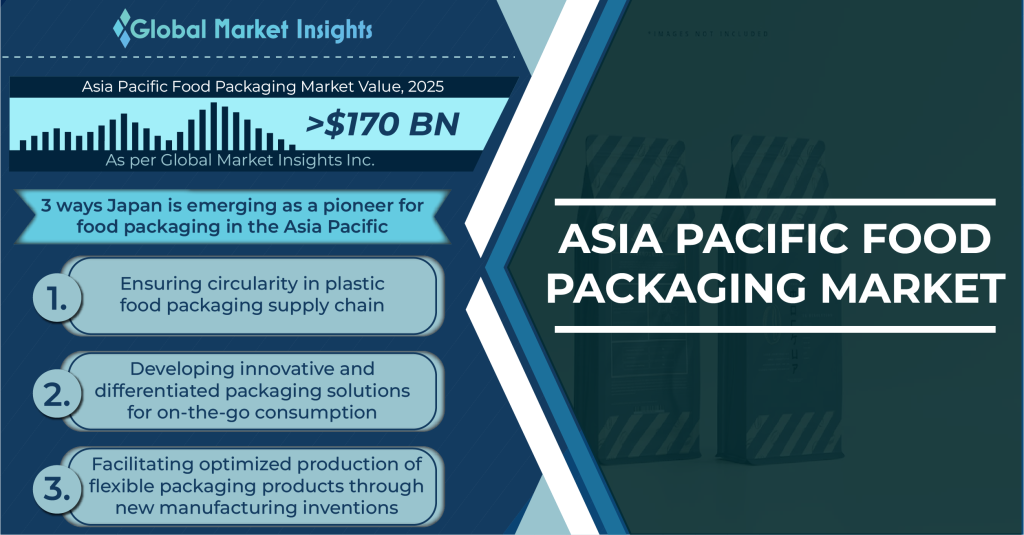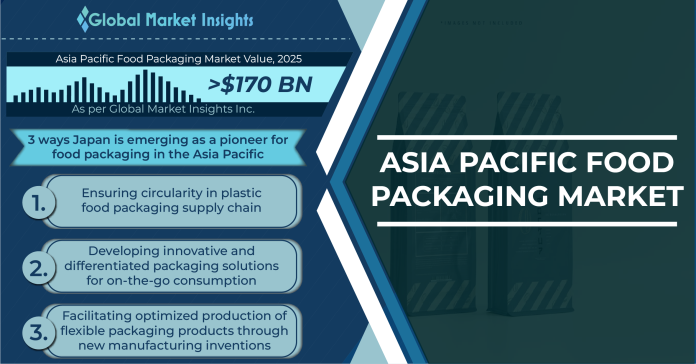Food Packaging
Burgeoning sustainability issues and evolving consumer preferences will trigger innovation in food packaging in the Asia Pacific region, particularly in Japan
Major innovation efforts to position Japan as a key contributor to APAC food packaging industry development
Product packaging is an essential part of supply chains in nearly every industry. In the food industry, especially, the role of packaging is indispensable. One of the main concerns for food manufacturers is to ensure that their products are kept safe and contamination-free throughout their life cycle, from manufacture to consumption, a need that is met by efficient and sturdy food packaging.
This is especially critical in the Asia Pacific region, which has one of the highest burdens of foodborne illness in the world, making food safety a critical issue for regional food production businesses. As one of the fastest-changing food markets in the world, innovations in food, particularly in terms of packaging and safety, are paramount in the Asian continent. With rapidly changing consumer requirements, climate change challenges, and an ever-expanding population base, every aspect of the food industry, including packaging, in the region is subject to persistent evolution. According to Global Market Insights Inc., the Asia Pacific food packaging market is set to cross USD 170 billion by 2025.
Another key issue addressed by effective food packaging in the Asia Pacific is the high burden of food wastage in the region. Nearly 30% of food is wasted along the supply chain before it reaches customers. Several innovations from Asia Pacific food packaging industry contenders are emerging as solutions to this issue, such as Hong Kong-based IXON’s new sous-vide aseptic packaging which was designed to store fresh meat for up to two years at room temperature.
Through inventions like these, food product packaging manufacturers in the APAC region are working to reduce the reliance of food suppliers, especially those dealing with perishables like meat, on cold chains, in turn driving down transportation costs and enhancing accessibility to food products across the Asian continent.
3 ways Japan is emerging as a pioneer for food packaging in the Asia Pacific
Over the years, Japanese food has cultivated an image for itself in terms of freshness, convenience, and strict hygiene standards. This reputation hinges on several factors, key among them being packaging, which is becoming a key area of focus for food manufacturers in the country.
1. Ensuring circularity in plastic food packaging supply chain
On the one hand, conventional plastic-based food packaging is important to sustain the longevity and quality of food. On the flip side, however, plastic consumption and waste from the packaging industry are among the major contributors to rising CO2 emissions levels. According to estimates from Our World in Data, the packaging industry alone is responsible for over 42% of plastic waste.
In this scenario, several countries in Asia are making efforts to curb the burden of plastic on the environment, with Japan emerging as a forerunner with the implementation of targeted initiatives to increase the circularity of plastic packaging as a resource.
While the gradual shift to paper-based products and focus on the reduction of single-use plastic reduction are among the emerging trends for this, one of the most impactful initiatives being taken at present is the Ministry of the environment’s new Plastic Resource Circulation Act. Introduced in April 2022, the main principle of the law is to encourage packaging firms to mitigate single-use plastic usage and adopt more circular systems and designs, such as refill products and waste-collection points for recycling, through the use of subsidies. Under the new law, companies conforming to the Act would receive USD 1103.58 from the Ministry, serving as an incentive for them to transition to a more circular packaging business model and subsequently create a more sustainable outlook for the APAC food packaging industry in general.

2. Developing innovative and differentiated packaging solutions for on-the-go consumption
Japan is also known for its inventiveness and offbeat products, not just in terms of food but also in the way it is packaged. Japanese packaging best practices are focused not just on showcasing the nation’s cultural attributes but also on facilitating convenience for consumers. In recent years, there has been an increase in demand from Japanese consumers for differentiating, healthier, and high-quality beverage options packaged in single-serve packs for more convenient on-the-go consumption.
To that end, SIG, DNP, and Cosmo Foods have addressed this need by setting the course for bringing trendy beverages to market in convenient, sustainable, and modern packaging solutions designed specifically for busy consumers seeking on-the-go options. In October 2021, the DNP – SIG Combibloc Co., Ltd. joint venture along with co-packer Cosmo Foods brought value-added filling technology and packaging innovation to Japan.
By installing a high-speed, state-of-the-art filling machine for SIG’s combismile, a next-gen on-the-go carton pack designed with tamper-evident and leak-proof closure and a modern curved shape, the collaborative effort was geared towards giving mobile consumers in Japan an innovative beverage packaging solution for consumption straight from the pack, on the go.
3. Facilitating optimized production of flexible packaging products through new manufacturing inventions
For the APAC food packaging industry, flexible packaging is emerging as a fast-growing segment, expected to register a nearly 5.2% growth rate through 2025, as per projections from Global Market Insights Inc. This growth is characterized mainly by its compactness, which reduces the number of raw materials as well as the energy required for its production.
One of the most common materials used in the production of multilayer flexible packaging products is an epoxy silane-based adhesion promoter, allowing for better protection of packaged content and extended shelf life. However, with food packaging regulations becoming increasingly stringent, the potential health safety implications of the substance have started to prompt food manufacturers and converters to seek safer alternatives to ensure interrupted production of multilayered flexible packaging.
Japan-based Toyo-Morton has made significant strides in this regard. In June 2022, the Toyo Ink Group member introduced a new lineup of food-safe, epoxy silane- and organic tin-free laminating adhesives products. Including the solvent-free ECOAD series and the solvent-based TOMOFLEX series, the new range was designed to suit numerous multilayer flexible packaging applications including high-performance retort, liquid pouch, and dry food, enabling the APAC food packaging market landscape to adapt to the increasing regulatory demands for food packaging safety.
Disclaimer: This post is for public knowledge and educational purpose.
Read this also: Pharmaceutical Packaging Market

